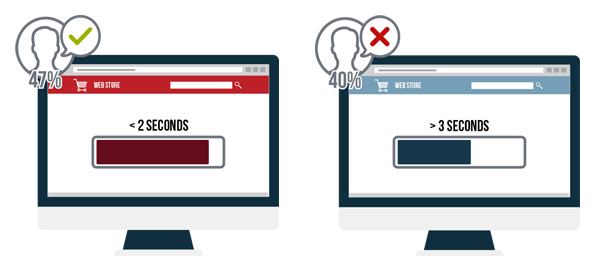

Now you’ve recovered from the last holiday season, it’s time to prepare for the year to come. Here are 3 tips to make sure that your web store can handle seasonal peak volume without breaking a metaphorical sweat.
The seasonal peak volume struggle
What are the things you can be certain of every holiday season? We can name a few:
- Holiday music somehow seeming to start earlier than last year
- People complaining about point 1
- A surprising number of big-name e-commerce sites struggling to deal with peak holiday volumes
We’ve touched on this topic before, when we discussed surprising seasonal service disruptions in our previous article about prepping your digital storefront for Black Friday and Cyber Monday. Not surprisingly, more major retailers struggled to deal with the seasonal peak volume this year, with Lowe’s, H&M and J.Crew dealing with downtime.
A complete outage isn’t the only thing retailers should be worrying about during peak volume, seasonal or otherwise. Slower load times can also have a big impact on your sales — every second counts.
And we mean that in the most literal sense of the phrase. Research indicates that a 1 second delay in page response can result in a 7% decrease in conversions.
Getting down from 10 to 9 seconds isn’t enough, either: 47% expect a web page to load in 2 seconds or less. Failing to live up to these expectations can have serious consequences, with 40% of respondents abandoning web pages that take longer than 3 seconds.
So… what can you do to avoid missing out on turnover during seasonal peaks, sales, and other key moments on your company calendar? Here are three precautions you can take to improve your web store performance.
1. Large, Stable Infrastructure
First things first: make sure you’ve got the right web store host!
A good web host is your most powerful asset when it comes to weathering the storm during seasonal peaks. There are a few factors that can make or break your selected host: RAM, storage, CPU allocation, security, and possibly even location.
No two web stores are the same, so there’s no one-size-fits-all web hosting services advice. Plus, a blog isn’t really the right place to get into the nitty gritty of web hosting. Just be sure to think carefully about your web store’s hosting needs before making a decision, instead of just going with what’s cheapest. Otherwise, you risk being left with lackluster resources that simply cannot shoulder the load during seasonal peaks.
Did you know? Here at Sana, web hosting services are one of the ways we help our clients excel at e-commerce. Download the Web Store Scalability factsheet for more details on how we keep our clients’ web stores running smoothly.
2: Load Balancing
Imagine: it’s Thursday afternoon, you’re racing through your to-do list and beginning to wrap up the week’s biggest priorities. Then your boss drops by, looking a little frazzled. “I need this urgent project finished by Monday lunch,” she says.
How you respond to this is determined by a lot of factors, of course. But the main one is probably: is your boss addressing you, or your team?

If it’s just you that needs to do all the work, the pressure is on. But if it’s you and your trusty colleagues, you can at least spread the load a little.
That’s load balancing in a nutshell: taking the pressure off a single machine and spreading it over a group to ensure more stable, predictable performance.
3: Lazy Loading
Does your web store feature long, content-rich product pages? They make life a lot easier for your clients, but they’re less ideal when you’re striving for improved web store performance.
Or rather, they can be — if you don’t use lazy loading.
Lazy loading does what it says on the box: it delays the loading of certain elements on a web page to enhance performance. Let’s go back to that big product page full of photos, videos, and other information.
Loading the entire page in one go can be taxing. To speed things up, lazy loading delays the loading of content until it actually appears on the user’s screen. This breaks the loading up into more manageable chunks, making for a speedier web store that won’t make your customers lose their patience.

Planning for 2023?
Get our guide on how to be B2B e-commerce ready in 2023 and beyond.



